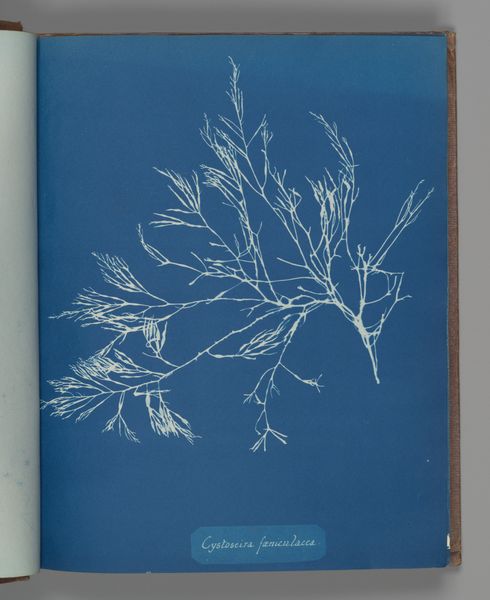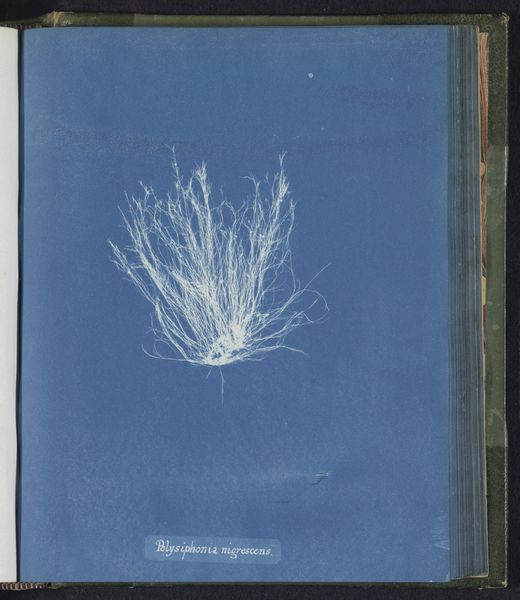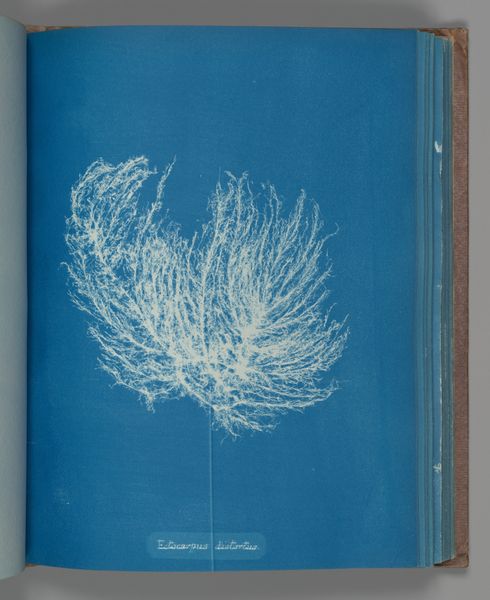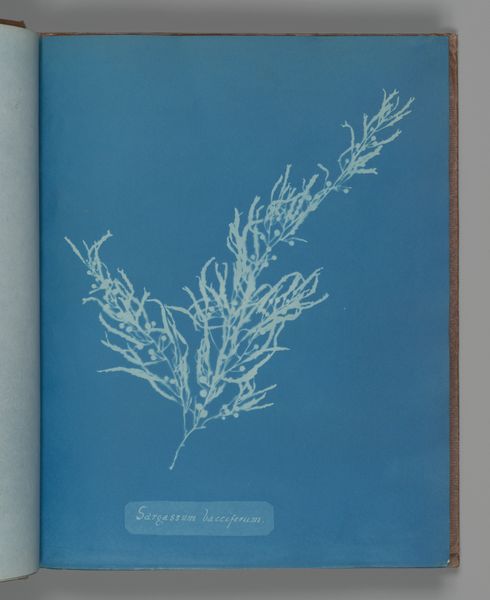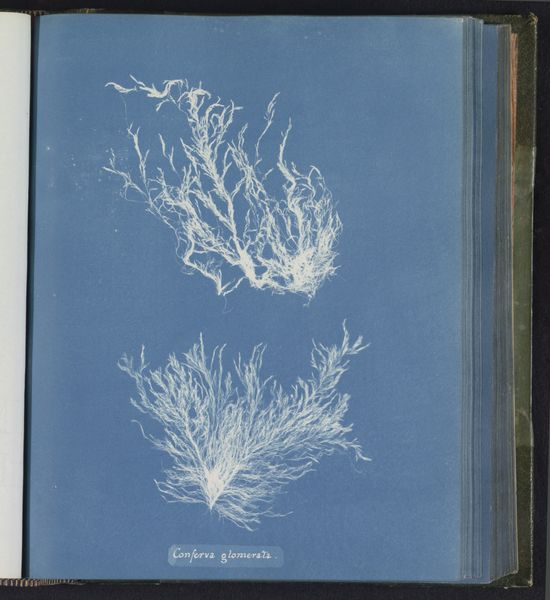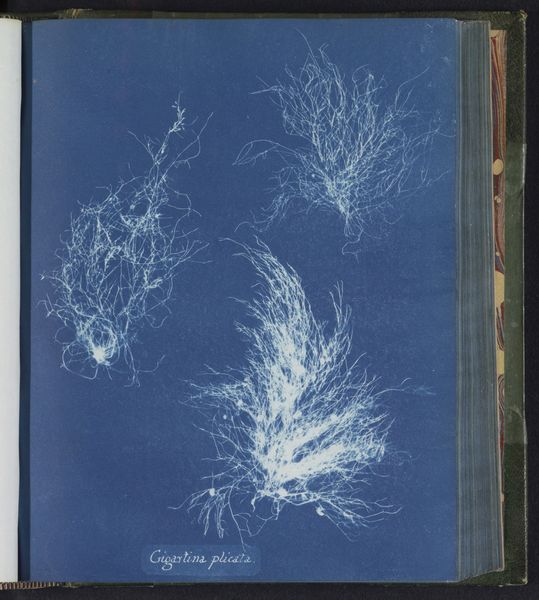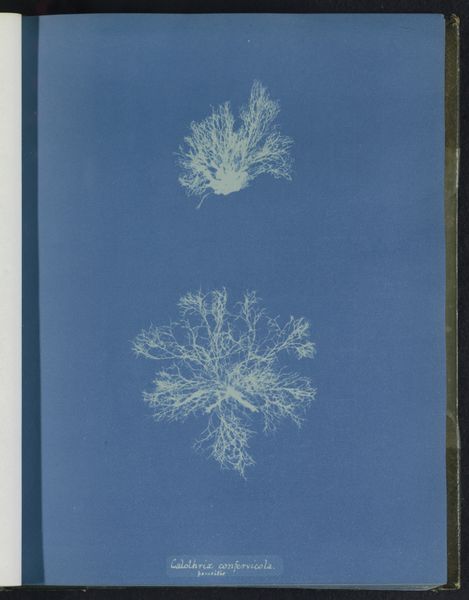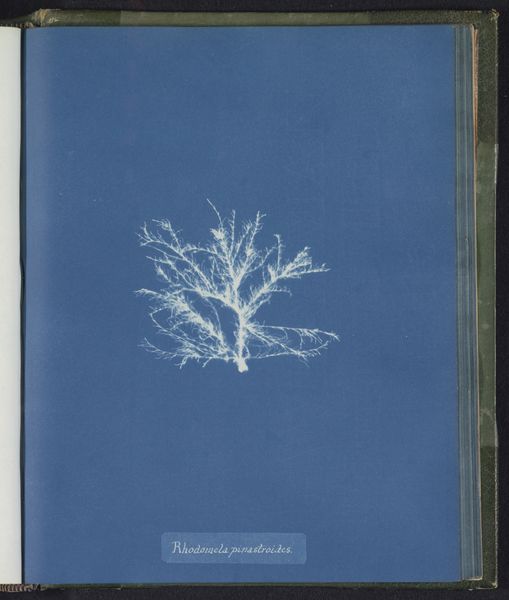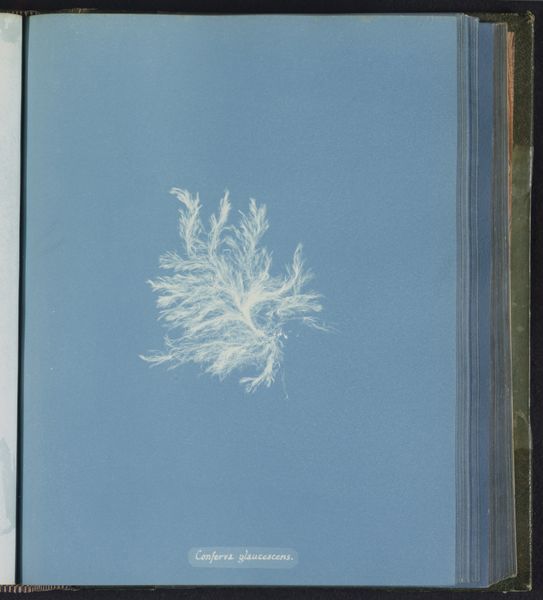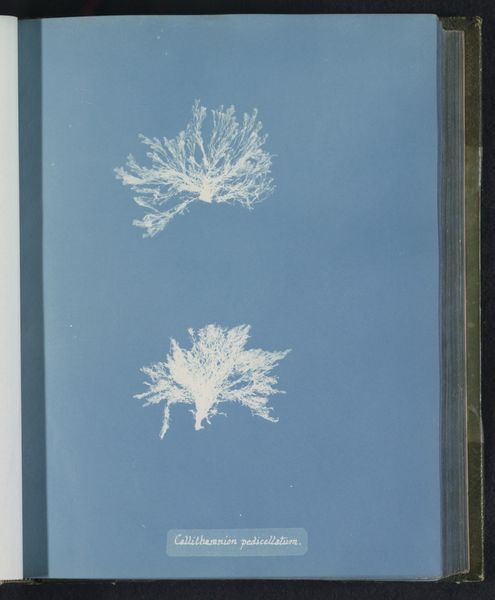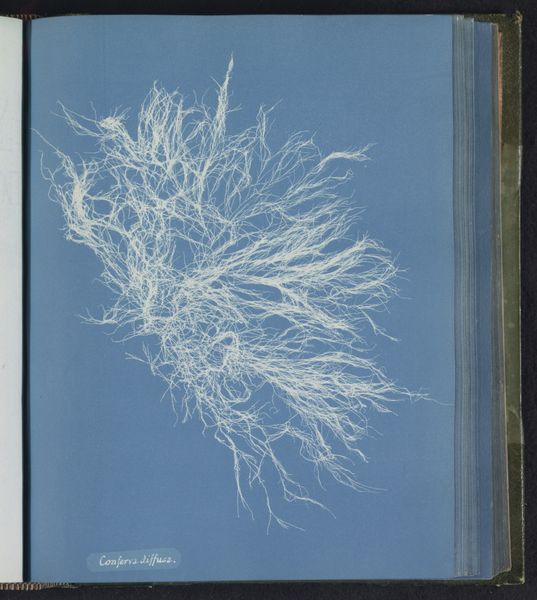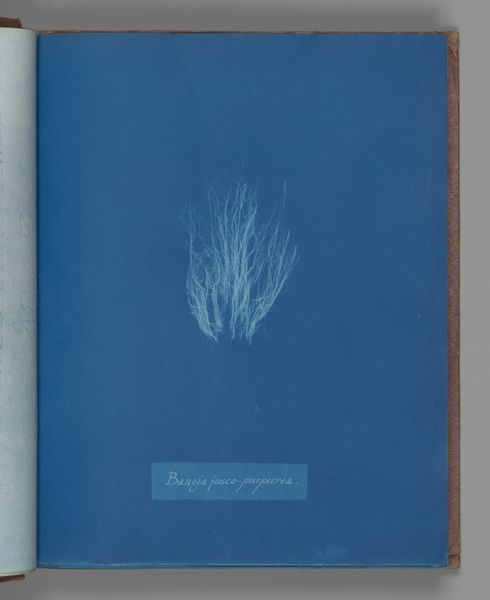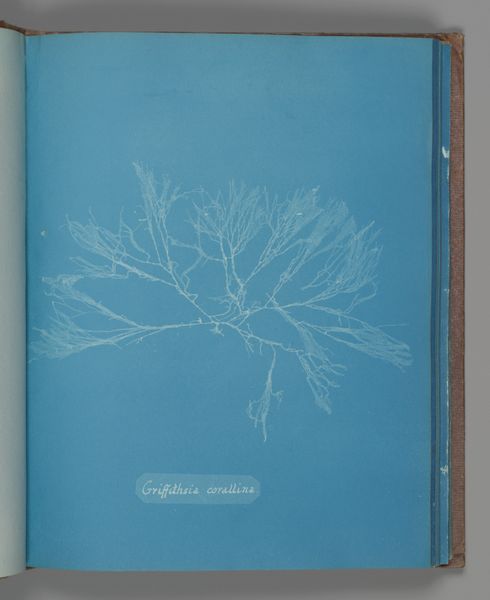
Dimensions: Image: 25.3 x 20 cm (9 15/16 x 7 7/8 in.)
Copyright: Public Domain
Curator: Ah, a dreamy, almost spectral vision! Is that a...sea creature? A piece of forgotten lace against the most calming blue imaginable? Editor: That’s a fantastic observation! We’re looking at "Ceramium rubrum," a cyanotype made by Anna Atkins between 1851 and 1855. The piece, showcasing delicate red algae, can be found at the Metropolitan Museum of Art. Cyanotype, of course, being a very early photographic printing process, gives it that distinctive color. Curator: Early photography – I love the immediacy! It's as if she’s bottled a little piece of the ocean right there on that paper. Though, you know, that Prussian blue gives it such a melancholic air, don't you think? Almost like a fading memory. Editor: Absolutely. And that melancholic air speaks volumes about its historical context. Atkins’s work exists in the intersection of science and art. A lot of her motivation was to document botanical specimens; however, in doing so she, intentionally or unintentionally, made a feminist intervention into the Victorian era sciences. Curator: A feminist intervention, yes! There's definitely something subtly rebellious about using this new technology to preserve the ephemerality of nature, doing the quiet, crucial work, without any expectation of fanfare, of categorizing it all in an archive—against the old guard of what was considered "serious" science at the time. Editor: Exactly. And cyanotypes themselves required ingenuity and a hands-on approach – empowering processes outside traditional, male-dominated spheres of science and art. Furthermore, algae studies in the Victorian era sometimes were thought to be just past times for wealthy young women; thus, making serious studies, such as this, were challenging patriarchal norms. Curator: It also makes you wonder what other silent, painstaking, and potentially groundbreaking works were dismissed back then, doesn’t it? Makes you want to shake a little empathy and awareness into the foundations of how we judge artistic contributions. And even now – is this work ‘Art’, ‘Photography’, or ‘Science’? Why must we box it at all? Editor: And that's what makes Atkins' work so compelling. She encourages us to question, to investigate those very rigid structures, both aesthetic and academic. Curator: Beautifully put! For me, it feels like looking at a celestial map… of seaweed. A tiny cosmos in Prussian blue.
Comments
No comments
Be the first to comment and join the conversation on the ultimate creative platform.
